Best Old House Neighborhoods 2010: First-Time Buyers
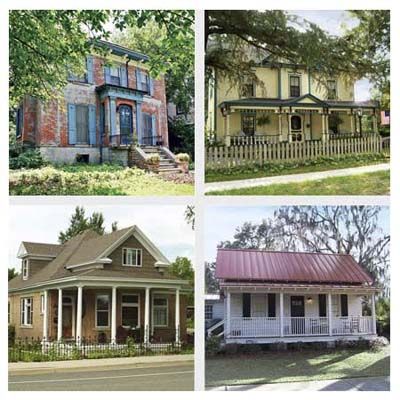
For our third annual Best Places to Buy an Old House contest, what we looked for was simple: oft-overlooked neighborhoods populated by people who share an appreciation of finely crafted homes that have plenty of past and lots of future. And what we found—with the aid of our friends at PreservationDirectory.com, who helped us contact thousands of neighborhood groups, real estate agents, residents, and preservationists for nominations—was mighty impressive.
For those just starting out, here are 15 places you can get a house so well built, you might just end up hanging on to it for life.
Coronado Historic District, Phoenix
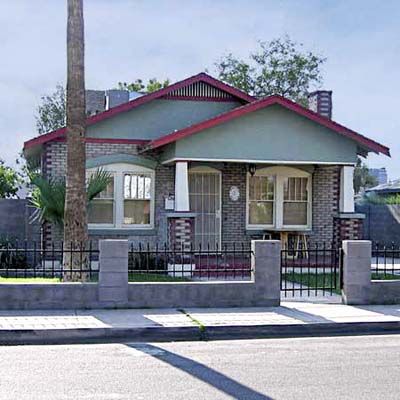
Once Phoenix had ensured its long-term survival by damming up the Salt River in the early 1900s, developers got down to the business of plotting the future of the growing Southwestern city. And that future was all about suburbs. By 1920 one of the largest was the Coronado neighborhood, home to a middle-class population of merchants, policemen, and railroad engineers living in modest bungalows and Tudor Revival cottages, many fronted by small lots with towering palm trees. These days the nabe is drawing a young, artsy crowd, who like to hang out on their front porches and wave to neighbors who pass by. The neighborhood was added to the National Register of Historic Places in 1986. Each spring, residents show off their homes—and often their DIY handiwork—during an annual house tour and community festival.
The Houses
Small to medium-size Tudor, Craftsman, and ranch houses, built from about 1920 to 1940, are predominant. Prices start at $150,000. Houses often include a freestanding garage out back with matching architectural details. During the Great Depression, many residents converted their garage into an apartment, moved in, and rented their home.
Why Buy Now?
The neighborhood’s affordability is outstanding. And while there are still a few dilapidated houses, most are in pretty good shape. Buy a house here and all you’ll need to do is pick out the furniture and add a fresh coat of paint.
Among the best for: Bargains, City Life, Easy Commute, First-Time Buyers, Southwest,
West Adams, Los Angeles, California
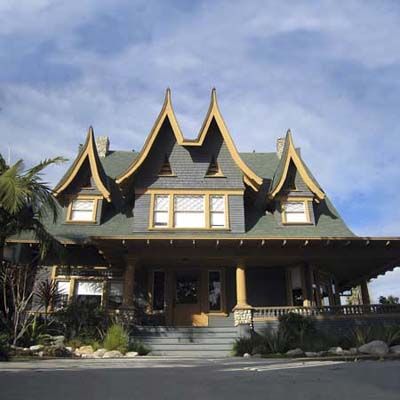
Once home to Los Angeles’s wealthiest 19th-century bankers and mining execs, West Adams seems like a studio backdrop for the set of a perfect small town. It’s become a shared secret among those of more modest means, who love its authentic feel in a city often chided for its artificiality. In recent years, residents have been restoring homes, showing how collectively invested they are in its future. “When you have everyone working together to preserve and maintain a neighborhood, it’s a very powerful approach,” says longtime resident David Raposa.
The Houses
This is L.A., so even traditional styles, such as Craftsman and Mission, are glitzed to the max with detail.
Why Buy Now?
Fixer-upper bungalows that were selling for $350,000-plus a few years ago can now be had for $250,000. Most of West Adams is in a “historic overlay zone,” which protects home facades and keeps property values rising.
Among the best for: City Life, Cottages and Bungalows, Families, First-Time Buyers, Fixer-Uppers, Gardening, West and Northwest
Thornton Park, Orlando, Florida
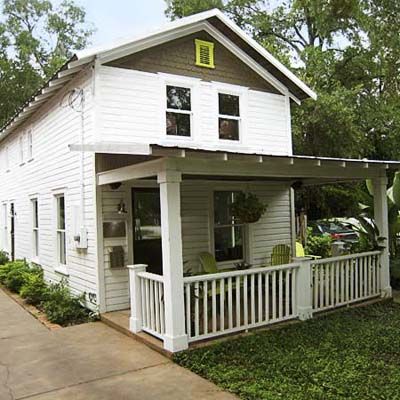
Sure, it’s just 25 miles from Disney World, but Orlando’s Thornton Park neighborhood offers amusements far more sophisticated than Space Mountain and a man-size rodent. Its European-style commercial district of restaurants, pubs, cafes, and shops is where locals go to kick back and relax. And many of those locals reside in beautifully crafted, not-so-big houses located along Thornton Park’s brick-paved streets—streets shaded by oak trees dripping with Spanish moss. The neighborhood is also a five-minute walk from Lake Eola Park, an urban oasis where you’ll find green space, hiking trails, and dog-walking paths surrounding a tranquil man-made lake.
The Houses
Thornton Park is known primarily for its wood-frame “cracker-style” homes, which feature center hallways (to promote air circulation) and deep porches with long overhanging roofs that help keep the summer heat at bay. Other styles include Craftsman, Mediterranean, American Foursquare, and shotgun homes. A restored 1,300-square-foot bungalow was recently on the market for $215,000, but you can find homes under $200,000 and up to $700,000.
Why Buy Now?
Thornton Park is emerging as a hip urban area that’s attracting young homeowners looking for a friendly, walkable community in which to live and raise their families.
According to resident John Krauklis: “The best reason to live in Thornton Park is its proximity to downtown Orlando (a five-minute walk) and Lake Eola—and our weather isn’t too bad either.”
Among the best for: City Life, Families, First-Time Buyers, Retirees, South, Walkability, Waterfront
North Mayfair, Chicago, Illinois
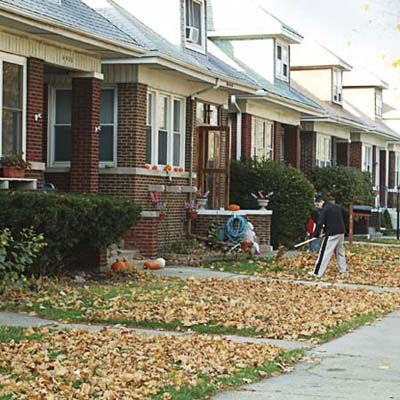
The Neighborhood
Like Polish sausage and deep-dish pizza, the Craftsman bungalow is both ubiquitous and beloved in Chicago. And one of the few places you can still score one for a reasonable price is North Mayfair. Here you’ll find block after uniform block of sturdy, tree-shaded brick bungalows occupied by an affable mix of old-timers, many of German and Swedish descent, and new residents. But what we like is the neighborhood’s stubborn determination to maintain its historic character through the North Mayfair Improvement Association, founded in 1929. The group just succeeded in its effort to get part of the neighborhood listed in the National Register of Historic Places and is adamant about keeping out-of-scale building developments at bay.
The Houses
Brick bungalows with Craftsman-style built-ins and stained glass.
Why Buy Now?
Property-tax freezes are available for those looking to restore older homes. Prices are (temporarily) down. Though rare, we found a fixer-upper bungalow for $218,000.
Among the best for: City Life, Cottages and Bungalows, Families, First-Time Buyers, Fixer-Uppers, Midwest
The Villages, Detroit, Michigan
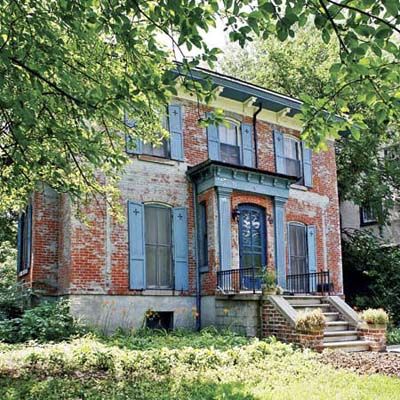
Yeah, times are tough in Detroit. Still, we can’t overlook its bargain-hunter’s bounty of architectural riches—just one reason we’re betting on the city’s survival. Although the Motor City’s economy is in tatters, the people who live in The Villages, a collection of six historic neighborhoods three miles east of downtown, remain upbeat. “There’s a richness in this neighborhood,” says resident Kathy Beltaire. “The houses are beautiful and the streets are walkable, but the people here are the best part—they really care.” These days, nice-as-can-be multigenerational families who have lived here for decades continue to welcome first-time buyers who appreciate intricate woodwork, front porches, and spacious urban yards. If you can nail down a job in this city’s tough economy, your money goes a long way here.
The Houses
The Villages offers more than 17 architectural styles, from Craftsman to Richardsonian Romanesque. The largest, most elaborate homes are in Indian Village, where prominent Detroit architects Albert Kahn and William Stratton designed grand Georgian Revival and Federal Revival homes for the city’s first auto barons in the early 1900s. Smaller cottages and rowhouses can be found in nearby West Village. Whatever your tastes, there are houses to be had in The Villages for less than $100,000.
Why Buy Now?
Not only will you get more house for your buck, you may just help fuel a Motor City comeback. That comeback already has a strong human foundation, thanks in part to the commitment of The Villages residents, who continue to mow the lawns and maintain the shrubs of the neighborhood’s empty and foreclosed homes, anticipating they’ll one day attract future neighbors.
Among the best for: Bargains, Cottages and Bungalows, Easy Commute, Families, First-Time Buyers, Midwest, Gardening, Victorians, Walkability
Central Hastings Historic District, Hastings, Nebraska
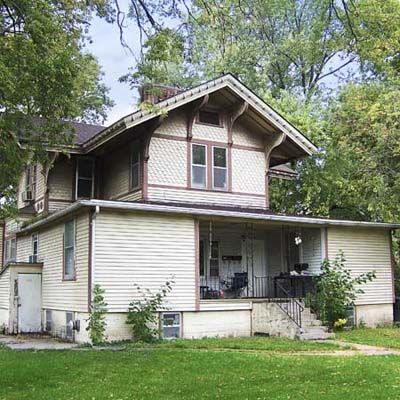
The first wave of residential construction in Hastings took place in 1878, when a handful of houses were built on lots carved out of a 160-acre homestead owned by Civil War veteran and local postmaster Samuel Alexander. Today the most charming fixer-uppers are still found here, just north of downtown. They’re well within walking distance of dining and shopping on Burlington Avenue, where an eclectic blend of mom-and-pop shops outnumbers big-box businesses.
The Houses
Ornate Victorian-era houses—Italianates, Sticks, and Queen Annes—paid for with railroad wealth stand beside more modest Prairie-style and Craftsman houses built rebellion of earlier excess. When the now-defunct Naval Ammunition Depot was constructed in 1942, a number of English-style cottages were squeezed into whatever space could be found to accommodate the growing workforce. Fixer-upper foursquares sell for $110,000, while a fully restored Queen Anne costs around $300,000.
Why Buy Now?
Under Nebraska’s Valuation Incentive Program, owners of qualifying historic homes who perform substantial renovations (25 percent of last assessed value) are eligible to have their property taxes frozen for eight years at the pre-restoration value. In addition, their property taxes will only rise 25 percent each year for the next four years until they reach the post-restoration value. Take advantage of this perk to convert large Victorian-era and Craftsman houses—divided into apartments during the housing shortage of the 1940s—back to single-family homes.
Among the best for: City Life, Cottages and Bungalows, First-Time Buyers, Fixer-Uppers, Midwest, Victorians, Walkability
North End, Nashua, New Hampshire
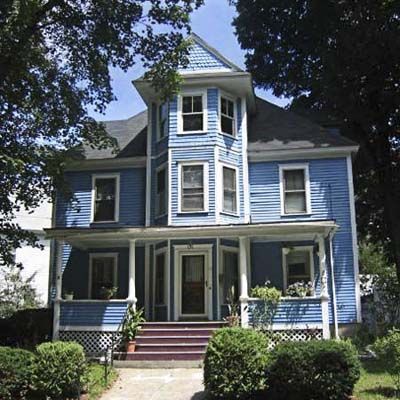
Nashua was originally planned as a manufacturing township by famed American architect Asher Benjamin back in 1823. Today the city, 36 miles north of Boston, has outgrown its original grid footprint and traded its textiles for the tech industry. But the North End’s beautiful old homes and large, overgrown maples are the real draw for those tiring of the bustle of Boston’s bedroom communities. Still, Nashua is no sleepy New England town, especially for those at home in the great outdoors. The North End borders Greely Park, a place for summer picnicking and evening concerts, and is close to the Nashua River Rail Trail, a newly expanded, 17-mile-long waterfront bike route that takes riders across the Massachusetts border.
The Houses
Prices for the North End’s elegant estates have followed suit with the rest of the real estate market. Classic Colonial Revivals and ornate Queen Annes from the late 19th and early 20th centuries, once listed in the millions, now start around $300,000.
Why Buy Now?
After years of passing their property down through the family, longtime residents looking to downsize are finally putting their big, beautiful North End homes on the market. If Boston is your work center, you’ll get more bang for your buck by buying in southern New Hampshire than in Massachusetts. And with the money you save, you’ll have a nice nest egg for renovations.
Among the best for: Families, First-Time Buyers, Fixer-Uppers, History Happened Here, Northeast, Victorians, Waterfront
Mesilla, New Mexico
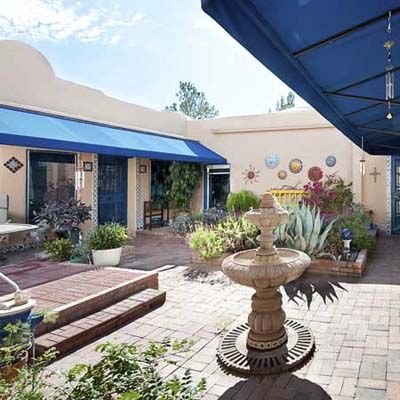
The heart of Mesilla is its historic 19th-century plaza, where locals and tourists go to dine at its top-notch Mexican restaurants and imbibe at its cantinas. Many think of their town as a hidden gem, a place where one can find all the Southwestern charms of tony Santa Fe at a fraction of the cost. Originally part of Mexico, Mesilla retains its authentic south-of-the-border culture and is home to a diverse group of residents who share the frontier credo of “live and let live.”
The Houses
Most are adobe, built between the 1850s and 1950s. The houses vary in condition, from precarious to pristine. That’s good news, since a fixer-upper here can be had for as little as $100,000, topping off at around $350,000.
Why Buy Now?
Adobe architecture is hot, hot, hot, partly because it’s such an energy-efficient building style. Many DIYers have descended on Mesilla in the past decade looking to restore an adobe house of their very own. Those fixer-uppers probably won’t be available for long.
Among the best for: Bargains, First-Time Buyers, Fixer-Uppers, Retirees, Southwest
Stuyvesant Heights, Brooklyn, New York
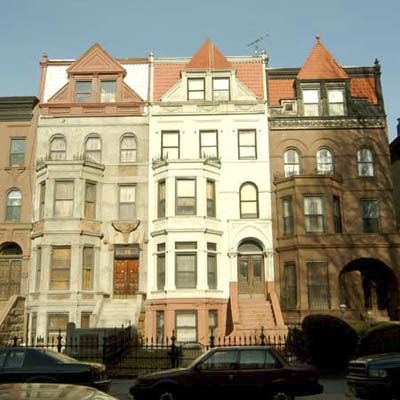
For years real estate agent Judd Harris kept a close eye on Brooklyn’s Stuyvesant Heights. He was waiting to see if it would start attracting the same kind of brownstone buffs who’d helped jump-start the real estate frenzies that have taken hold of nearby neighborhoods Fort Greene and Clinton Hill. These days he likes what he sees. “If you’re a buyer looking for lots of architectural detail, this place has a lot to offer,” he says. “And homes are still within reach of the average New York City buyer.” This culturally rich nabe is shedding its high-crime rep as restaurants, bakeries, and cafes open their doors to new and longtime residents, all of whom want a distinctly Brooklyn lifestyle for themselves and their families.
The Houses
Home to perhaps the most diverse array of townhouses in New York City, ranging in style from Federal to the ubiquitous Italianate brownstone to Queen Anne.
Why Buy Now?
While prices for townhouses were creeping into the millions a few years ago, they’ve come down of late. Some fixer-uppers are going for as low as $475,000. It won’t stay that way.
Among the best for: Bargains, City Life, Easy Commute, Families, First-Time Buyers, Fixer-Uppers, Northeast, Victorians, Walkability
Salisbury, North Carolina
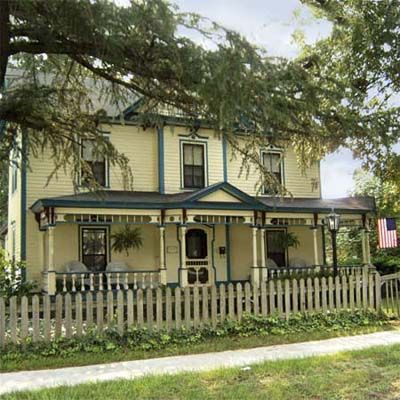
We’ve featured the small Piedmont-region city of Salisbury several times in our Save This Old House column. And with good reason. This place is packed with great old houses, many of them in need of a little TLC—and some dating all the way back to the late 1700s. Salisbury is home to 10—count ’em: 10—National Register Historic Districts, all with available properties.
The Houses
You can still track down an old brick Federal home. But you’re more likely to find Craftsmans, Greek Revivals, and Queen Annes. Prices start at around $65,000 for a fixer-upper, but even many beautifully restored homes go for less than $200,000.
Why Buy Now?
Salisbury is home to the Historic Salisbury Foundation, one of the most active and successful historic-preservation groups in the country. Since the 1970s, they’ve helped save 90 structures from demolition and are deeply involved in revitalizing Salisbury historic neighborhoods by buying endangered houses and selling them to preservation-minded owners.
Among the best for: Bargains, Cottages and Bungalows, First-Time Buyers, Fixer-Uppers, South, Victorians
Midtown Tulsa, Tulsa, Oklahoma
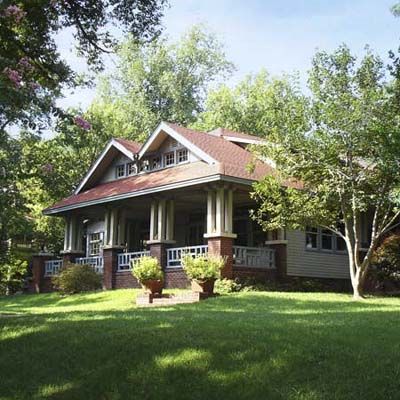
If you’ve ever been to Tulsa, you know it’s home to some of the finest—and leafiest—residential neighborhoods in the country. And the finest of the finest are in Midtown. Here’s where the Sunday-drive set motors down shady blocks, slowing down to note the contact info from a For Sale sign in hopes of someday living here. The appeal is easy to understand. Aside from beautiful houses, Midtown is home to an urban forest and a massive neighborhood park located along the Arkansas River. Residents also love its walkable avenues, which are lined with shops, cafes, and restaurants.
The Houses
Midtown’s best homes were built around the turn of the 20th century, when Tulsa went from cow town to boom town with the discovery of oil. Deep-pocketed oil barons built homes in several classical styles, including Neoclassical Revival, Tudor Revival and Colonial Revival. The bungalows and ranches came later. A slew of teardowns in the past decade made way for newer homes (and some rather unsightly McMansions), but that’s slowed down in recent years. You can get a 1,500-square-foot fixer-upper starting at $175,000, though prices tend to climb the closer you get to downtown Tulsa.
Why Buy Now?
This is a well-established neighborhood, with stable home prices and friendly lifelong residents. Its safe streets and good schools make it a prime location for families. And prices vary enough to ensure there’s something for everyone, from starter homes to manses.
Among the best for: Bargains, City Life, Easy Commute, Families, First-Time Buyers, Gardening, Southwest, Waterfront
The McLoughlin Neighborhood, Oregon City, Oregon
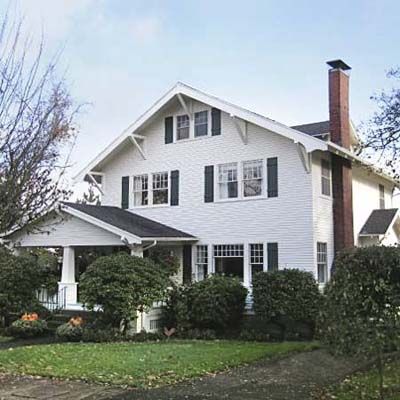
Oregon City was the final terminus of the Oregon Trail; in the mid-1800s, thousands of pioneers ended up here searching for farmland, business opportunities, or simply a fresh start. And many of those who succeeded wound up building houses, creating a neighborhood that managed to dodge the economic ups and downs of the last century. This cluster of fine homes is set on a cliff overlooking the Willamette River and punctuated by church steeples.
The Houses
Development here was haphazard. So while there are clumps of similarly styled houses, you’re more likely to find a Queen Anne next door to a bungalow next door to a 1950s ranch. Prices range from $150,000 to $200,000 for a 3-bedroom Victorian-era cottage or a bungalow to $250,000 to $350,000 for a large, restored Queen Anne.
Why Buy Now?
No matter what you’re looking for—whether it’s a starter home or a fully restored 3,000-square-foot manse—you can find it here. Prices are substantially lower than they are in Portland, which is just 25 minutes away.
Among the best for: Bargains, City Life, Families, First-Time Buyers, Retirees, Waterfront, West and Northwest
Northwest Quadrant, Beaufort, South Carolina
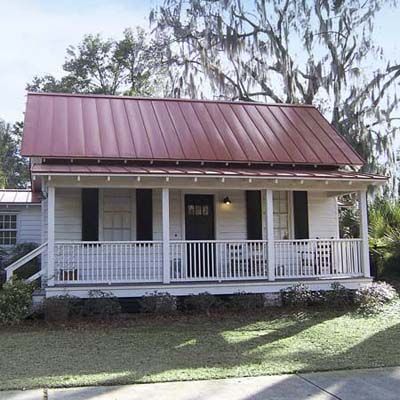
If you want to get in on the ground floor of a major downtown neighborhood revitalization, hit up Northwest Quadrant. Once a thriving black middle-class neighborhood, the area—now half white, half African-American—fell on some hard times in the 1970s. But the city and its preservation-minded mayor are determined to breathe new life into it by working with residents to edge sidewalks, clear vacant lots, and push people to buy, restore, and love a house here.
The Houses
They are modest one- and two-story shotgun-style homes, or “hall-and-parlor cottages,” as they call them here. Most are close to the street and were built with timber frames, wood siding, and tin roofs. Prices start at $100,000 and top out at $150,000.
Why Buy Now?
This is a great opportunity to live in one of the prettiest waterfront cities in the South. Beaufort is working with the Historic Beaufort Foundation to come up with a master plan for revitalizing the area that will include restoration guidelines and financial incentives. The Quadrant’s downtown location means it’s within walking distance of restaurants and shops. “These houses are the future of Beaufort,” says Evan R. Thompson, the foundation’s executive director.
Among the best for: Bargains, City Life, Cottages and Bungalows, First-Time Buyers, Fixer-Uppers, Gardening, History Happened Here, South, Walkability, Waterfront
Old Historic Sandy, Sandy City, Utah

Located in the southeastern corner of Salt Lake County, Sandy City is the kind of place where your neighbors will bring over vegetables picked from their garden and spend the rest of the night shooting the breeze on your front porch. The town’s first settlers were actually pioneer farmers. But by the 20th century, mining brought a boom to town, employing hundreds of men at three smelters and two sampling mills. Today, the city is home to around 93,000—many of whom make the 15-mile commute to Salt Lake City for work but enjoy Sandy’s good schools, close proximity to major ski slopes, extensive network of hiking trails, and 26 recreational parks.
The Houses
Small starter cottages and fixer-uppers in Old Historic Sandy start in the low $100,000s. A cozy, 2-bedroom bungalow with a well-kept fenced-in backyard was just listed for $168,000. Elsewhere in Sandy, homes range from the $200,000s to the millions.
Why Buy Now?
Since 1960, Sandy’s population has grown steadily while continuing to remain one of America’s safest cities for its size. It’s a good time to buy in the area; a September 2009 report from the National Association of Home Builders and Wells Fargo showed a rise in housing affordability of almost 20 percent from 2008 for the Salt Lake City metropolitan area.
Among the best for: Cottages and Bungalows, Easy Commute, Families, First-Time Buyers, Fixer-Uppers, West and Northwest
The McKinley Hill Neighborhood, Tacoma, Washington
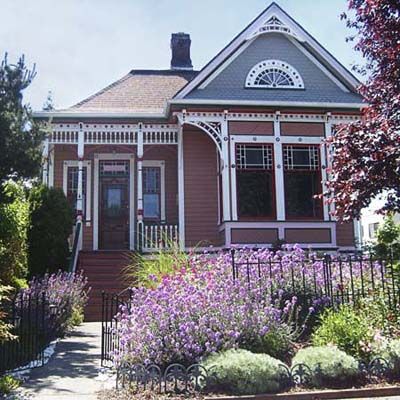
McKinley Hill, located on the highest point of Tacoma, started out as home to clerks and managers from the Northern Pacific Railroad, which terminated just down the hill at what’s now one of the Pacific Northwest’s largest transportation hubs. In 1905, the construction of a streetcar line here spurred the building of some of the city’s finest homes, built with fine details by master craftsmen working in the city’s bustling furniture and shipbuilding industries. The neighborhood went into urban decline in the 1960s and ’70s. But it’s now gaining favor among young families and singles looking for an older city neighborhood—its modest Main Street has pubs, restaurants, and boutique shops—that still has a little grit and character.
The Houses
Most homes here were built between 1885 and 1929. Styles include well-appointed Craftsmans, Cape Cods, American Foursquares, Folk Victorians, and Tudor Revivals. Prices range from $150,000 to $290,000.
Why Buy Now?
McKinley offers some of the lowest home prices in the Puget Sound region. And its proximity to trains and a light rail system that will soon reach nearby Seattle and the airport is making it an attractive option for commuters. A new preservation nonprofit called Historic Tacoma, formed three years ago, is currently focused on McKinley Hill. Their recent efforts have included restoring the neighborhood’s historic 34th Street Bridge, which connects McKinley to downtown Tacoma.
Among the best for: Bargains, City Life, Easy Commute, Families, First-Time Buyers, Fixer-Uppers, Gardening, Walkability, Waterfront
